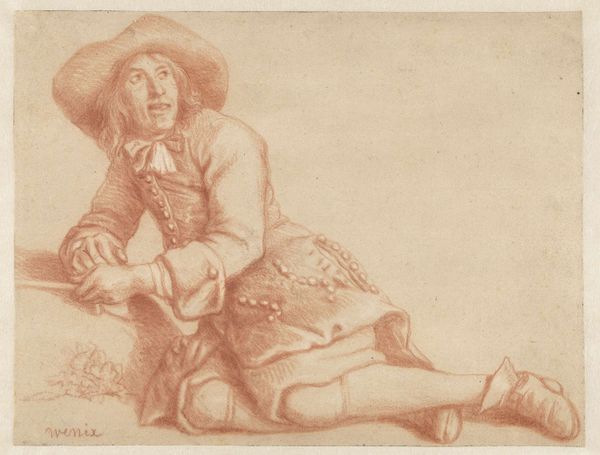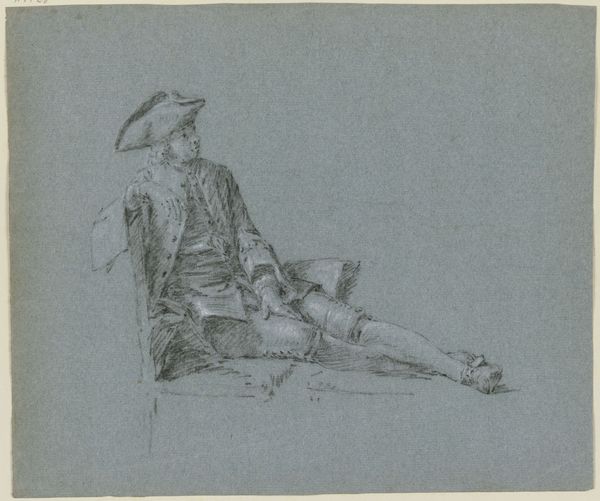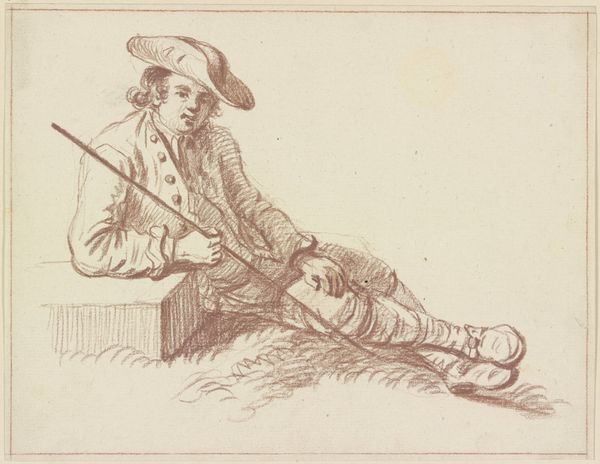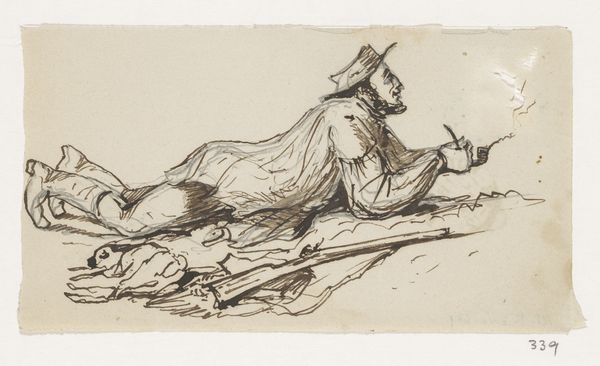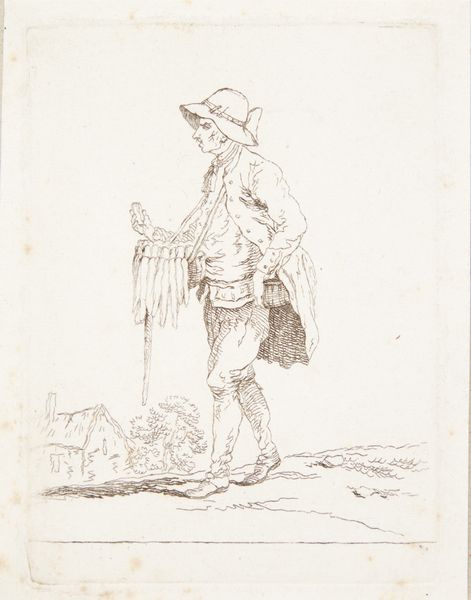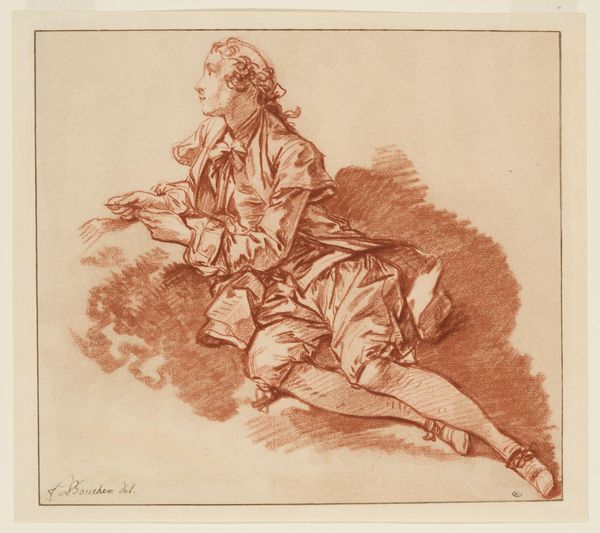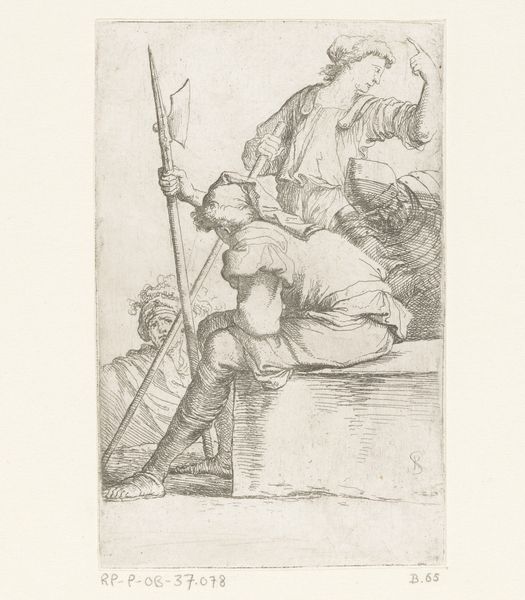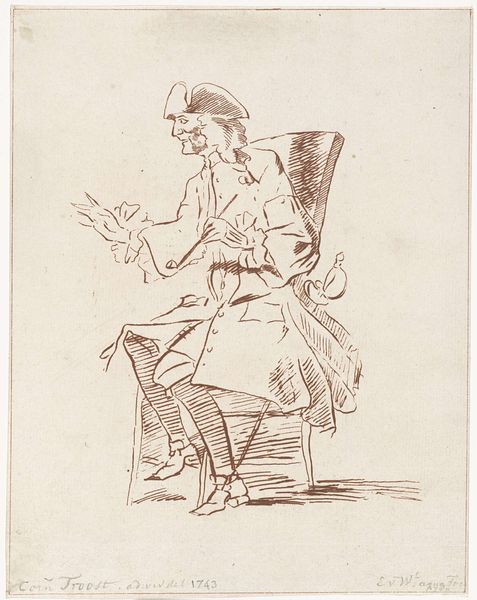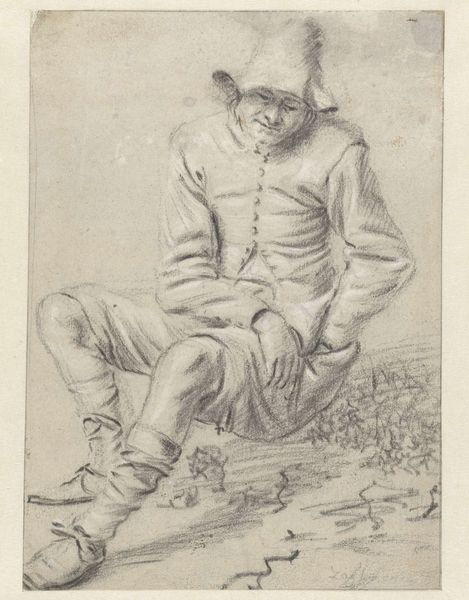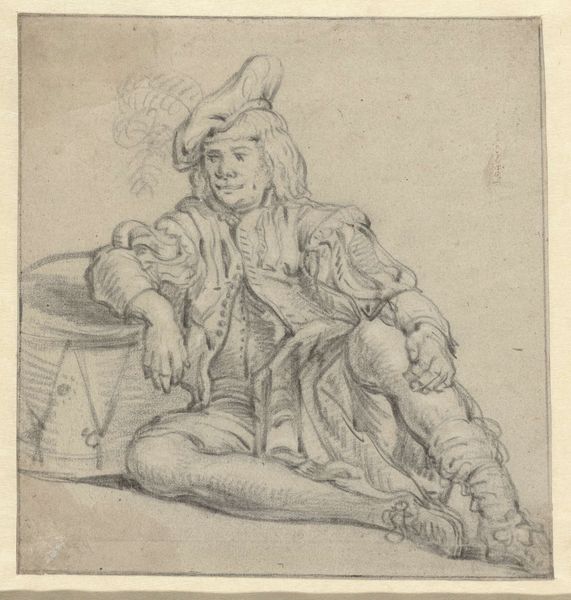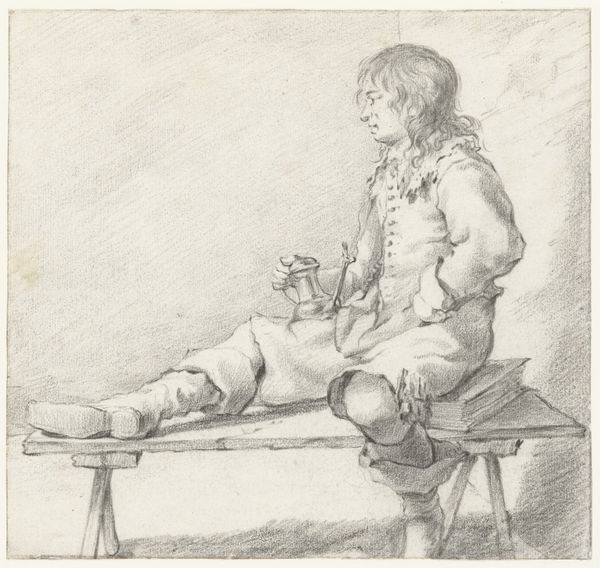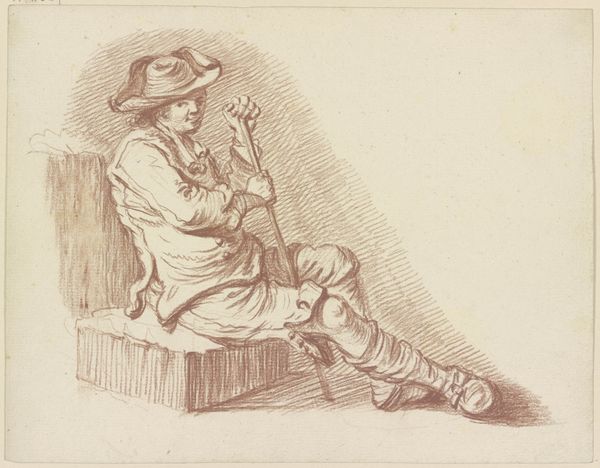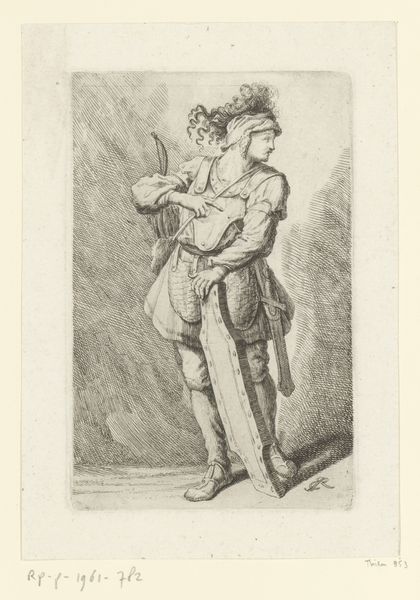
Am Boden sitzender Mann, den linken Arm erhoben, in der Rechten einen Stab haltend c. 1765 - 1769
0:00
0:00
drawing, pencil, chalk
#
portrait
#
drawing
#
pencil sketch
#
landscape
#
figuration
#
pencil
#
chalk
#
15_18th-century
#
rococo
Copyright: Public Domain
Editor: So, this is "Am Boden sitzender Mann, den linken Arm erhoben, in der Rechten einen Stab haltend," or "Man Sitting on the Ground, Left Arm Raised, Holding a Staff in his Right Hand", a pencil and chalk drawing by Georg Melchior Kraus, dating from around 1765-1769. There’s something theatrical about his pose; I'm wondering what he is looking at. What do you make of it? Curator: That's an astute observation. It is tempting to see this drawing outside the social and theatrical conventions within which it was created. This era loved spectacle. Consider the rise of public art exhibitions during this period and how Kraus and other artists, would have used these sketches in preparation for larger works. Think about the very act of depicting a common man – was it simply an aesthetic exercise, or was it also commenting on the social order? Editor: Interesting, I didn't consider that it could be a study for a bigger project and that this study would’ve then contributed to this interest in 'spectacle.’ So you are saying his raised hand might signify more than just simple pointing? Curator: Precisely. The gesture becomes significant when viewed in light of social performance. How are artists using representations of ordinary people to engage with broader social narratives? Were these 'commoners' presented as noble and idealized, reinforcing a certain viewpoint, or was Kraus questioning that? Consider the role the Städel Museum plays now in conserving and showcasing works like these – how does it affect our understanding of this era? Editor: So, it’s less about what the man is literally pointing at, and more about how Kraus is using his pose, and him, to make a statement. Food for thought! Thank you. Curator: Indeed. And understanding that is how we can better appreciate the political context and lasting value of this artwork.
Comments
No comments
Be the first to comment and join the conversation on the ultimate creative platform.
